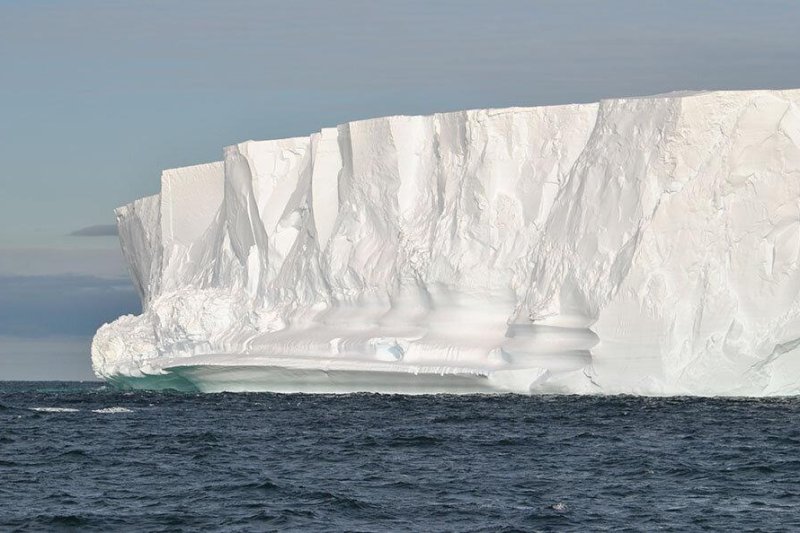SOME GOOD NEWS
Antarctic ice walls protect glaciers from warm ocean water
By
Brooks Hays
(0)

Ice walls along the outer edge of coastal glaciers help protect inland ice from warm ocean currents. Photo by University of Gothenburg
Feb. 27 (UPI) -- The planet's oceans are capable of storing a lot more heat than Earth's atmosphere. But while Antarctica's coastal glaciers have experienced accelerating melt rates over the last few decades, the continent's interior ice remains relatively stable.
This stability isn't well understood, nor are the threats to this stability.
Using data collected by an array of instruments deployed along the coast of the Getz glacier in West Antarctica, scientists at the University of Gothenburg, in Sweden, were able to gain new insights into the influence of warm ocean currents on the continent's ice shelves.
The data confirmed what previous studies have shown, that Antarctica's ice shelves are thinning as a result of global warming.
RELATED Scientists greatly underestimating methane emitted by humans
"What we found here is a crucial feedback process: the ice shelves are their own best protection against warm water intrusions," Céline Heuzé, Gothenburg climate researcher, said in a news release. "If the ice thins, more oceanic heat comes in and melts the ice shelf, which becomes even thinner etc. It is worrying, as the ice shelves are already thinning because of global air and ocean warming."
But the research also showed the walls at the edge of ice shelves are surprisingly effective at protecting inland ice from warm water.
The Getz glacier has a floating section measuring several hundred feet thick. Beneath this section lies saltwater. The end of this floating section features a vertical edge that plunges roughly 1,000 to 1,300 feet beneath the ocean surface.
RELATED Complex causes behind Arctic greening, researchers say
"Warm seawater flows beneath this edge, towards the continent and the deeper ice further south," said Anna Wåhlin, lead author of the study and professor of oceanography at Gothenburg.
But the new data showed most of the warm ocean currents are blocked by the vertical edge.
"This limits the extent to which the warm water can reach the continent," Wåhlin said. "We have long been stumped in our attempts to establish a clear link between the transport of warm water up on the continental shelf and melting glaciers."
RELATED Without sea ice, Arctic permafrost more likely to thaw
The new research, published this week in the journal Nature, highlights the importance of monitoring the nexus between ice and ocean at the ends of the floating portions of coastal glaciers.
The findings suggest the threats to coastal glaciers and the inland ice they guard are different than researchers previously estimated.
"We no longer expect to see a direct link between increasing westerly winds and growing levels of melting ice," Wåhlin said. "Instead, the increased water levels can be caused by the processes that pump up warmer, heavier water to the continental shelf, for example as low-pressure systems move closer to the continent."
No comments:
Post a Comment